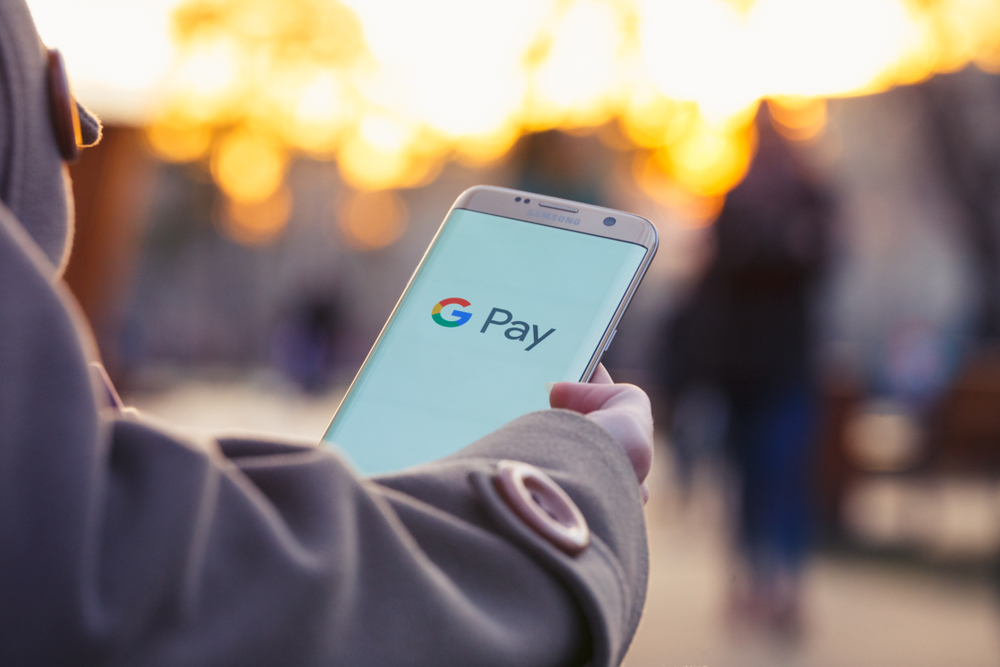Today, Android and iOS’s Google Pay is launching again with an extensive range of the latest features. The app changes an item that many people consider as a peer-to-peer or card repository (tap-to-pay) transaction system to an extremely sophisticated service. The latest app will be available throughout the U.S. from today.
The app’s latest version will consist of three new taps: ‘Explore’ is an area where Google will provide discounts and deals, ‘Pay’ which offers peer-to-peer transactions, and your transaction background also, with tap-to-pay, and lastly, ‘Insights’ that enables you to link your bank accounts for acquiring a summary of your money that you can track.
You access the option that gives Google Pay access to your account for Google Photos and Gmail inbox to search for receipts. OCR technology and Google will work together to auto-scan then corporate them to your money monitoring.
Google is going to join hands with various banks in 2021 to directly provide complete online savings and checking accounts, and in Google Play. Google refers to this service as ‘Plex.’
Google is relatively familiar with most of the services, but it will be the initial time they have combined it into one app. By doing this, Google Pay undoubtedly becomes a direct rival to a huge variety of different services and apps like Samsung Pay, Apple Pay, Square Cash, Venmo, PayPal, Simplify, Intuit’s Mint, Shop, Truebill, and online Banks such as Ally also.
Many firms out there will need to accept that Google will make a big impact in their market. The advanced features are all opt-in; therefore, if you choose to use it in its present condition today (as Android’s tap-to-pay app or iPhone’s peer-to-peer transactions) you can do it.
Despite this, it presents a significant growth of information and capabilities compilation in a Google app, which may trigger privacy anxieties. Google informs me one of its policies is avoiding the sale or sharing of information to other third parties. It won’t give your transaction background to the entire Google to target ads.’
Besides, it will offer a first time experience, offering a range of settings options and privacy prompts. Google servers differ from Apple Pay’s because they access your information to facilitate its analysis, enabling you to trace it in the app. However, the firm promises that it will be heavily encrypted.
There is a unique, and maybe obvious privacy option for the ones who wish to acquire personalized deals; they have the choice to concede to a trial running for three months, permitting Google to check their transaction background to personalize their offers. At the end of three months, they will receive a query on whether they wish to continue using that aspect of the service.
Below we share our knowledge about all the features of this service.
Pay
Google Pay’s center and the primary tab is a blend of two of the current Google Pay services: peer-to-peer and tap-to-pay. Its design enables it to offer more data than previously. The initial group of icons is for your contacts. When you tap any of them it starts a conversation-like display of your payments to each other.
You can also create group payments, placing several individuals in a conversation, enabling them to send and ask for cash from one another. For instance, if you are splitting the bill at the pub or have several roommates splitting bills. Also, it will trace who has submitted their share and who hasn’t and permit you to press a button to remind them.
This means it is like Venom. Beneath ‘people’ are all the companies you have paid through Google Pay with tap-to-pay. Alternatively you can use the browser-installed version. Similar to individuals, opening it offers a conversation-like display of your transactions. Suppose you own a certain shop’s loyalty or rewards card; in that case, Google Play can connect it with the particular shop. Retailers can also send offers through this chat and the primary tab for discounts.
Google Pay is still going to perform the actions that many people who own Android phones expect, effortlessly using NFC tap-to-pay to make payments. However, Google is inventing other methods to pay using this app also. Two new buttons for ‘Order Food’ and ‘Get Gas’ are found below ‘People and Businesses.’
The option for food is connected to Google’s current food ordering mechanism. It supports so many systems that the company confidently says that it works with more than 100,000 hotels.
You can also pay for parking or gas straight in the app rather than going through the parking lot or the gas pump options at the pay station. According to Google it will operate in 30,000 areas.
Explore
The Explore Tab is the first latest Google Pay tab; here, Google sums up deals for you. It automatically displays standard offers here; however, you have the choice of having Google’s algorithms check your transactions to personalize the offers available.
To seemingly allay any fears regarding privacy, it will give you the option to pick the option of testing the service for three months. First of all, this service is free and the ‘test’ involves primarily a reminder signal that pops up asking whether you wish to go on utilizing it.
Google informs me that it won’t give any of these retailers any information, even though, obviously if you do not make use of any of these offers, the retailer will be aware of this as you are spending cash there.
Each of the deals that Google showed me had cash-back offers. This is a vital feature because the refunded money is deposited in a Pay Account for Google. If you wish to move the cash in your bank account you have to transfer it.
These offers present a very appealing feature because all you need to do is tap ‘activate’ which enables you to connect the offer with whatever credit card that you have kept in Google Pay. You can use that credit card to redeem the offer and the rest will fall into place instantly; you do not need to memorize the code of a coupon.
Lastly, the Explore tab consists of a barcode scanner and a QR on top. It presents a simple concept; when you visit a shop, you scan an item with it, and instantly begin a search for Google Shopping enabling it to purchase elsewhere.
Users of Google pay can also scan one another’s personal barcodes for transferring money to each other without sharing their contact particulars.
Insights
In Google Pay’s rightmost tab is the area where the app offers a lightweight design of apps like Simplifi and Mint, which offer most of your financial data in one area. Google terms it as ‘Insights’ and it may not surprise you to know that it strongly combines both search and Google’s capability of processing information with its algorithms.
After you link your credit and banking accounts, Insights starts displaying to you how you spent your money and saved it, and also, the impending bills. It performs this task by scanning through the transactions you make. So, you do not need to manually input or classify items. It works with credit, debit, and savings cards and standard checking.
You have the option of a couple more information sources to share with Google Pay; your Google Photos account and Gmail account. If you turn one of them on it uses OCR to immediately study the receipt and link it to the appropriate transaction.
With Google Pay, you can use natural language to look for terms. Google gave me a demo and showed me ‘Mexican shirts’ and ‘shirts’ searches. Each produced results that would not have been effective by searching using a more conventional credit card or banking app. Also, you can combine searches to summarize what you are searching for.
And because it’s 2020, the Google Pay app will also feature something akin to Stories on Instagram. Go to the top of the Insights screen and tap on the blue icons. It will offer you short summaries of financial data Google Pay considers helpful for you, for instance, future bills, the amount of cash you have sent to friends directly, significant transactions, etc.
In conclusion, Insights lacks all the features other rival apps have; however, Google seems to bank on how beneficial it is to have an all-inclusive app.
Plex
At last, in 2021 Google will start another banking service called Plex. Using Plex, you can deal with simple savings and checking in the app, communicating online directly with the bank. Please note that Google does not offer banking services directly. Instead, Google usually allows some banks to use the Google Pay app for banking.
Google has given a list of 11 credits to work with, enabling you to choose the one you like. It also indicates that there will be no monthly fees for the checking and savings accounts, minimum balances, or overdraft charges. Clients will access a ‘Goals’ feature also with simple cash management targets. They can also create repetitive tasks like moving cash to a savings account.
Being Google signifies that data about Plex and Google Pay leaked today before the formal announcement. Already, 9to5Google has checked out the app and discovered Plex details. Some bank partners are Stanford Federal Credit Union, Citi, BBVA, and BMO.
Google Pay’s changes are extremely impressive. If you choose each of its features (and so have faith that Google will store your data safely and confidentially) you will get a comprehensive set of effectively-installed features across various methods of checking how you spend and save.
Of course, it also gives Google a lot of opportunities for making profits. Although it will not share any information with the ads division, it has various ways of making commissions or get small percentages from transactions. Since Google seems to have partnered with many retailers, this may generate more money. The Explore tab clearly describes its offers as ’Sponsored.’
Your only concern as a user is how Google sells its products and how it impacts your experience and privacy. Google provides answers to common questions about what will happen to your financial information. Google has a policy that states it should not give data to other Google divisions nor share it with third parties. Your information is encrypted, obviously, and amazingly, you cannot get this app on the web. You can only get it on iPhone or Android and just one device at a time.
The app will feature one area for handling all privacy settings for each of the services it provides. Choosing to use one of Google Pay’s latest features will mostly depend on whether you have faith in Google to give you convincing answers for non-obvious queries. Usually, with services that compile significant information, these questions are crucial.
image XanderSt / Shutterstock.com



